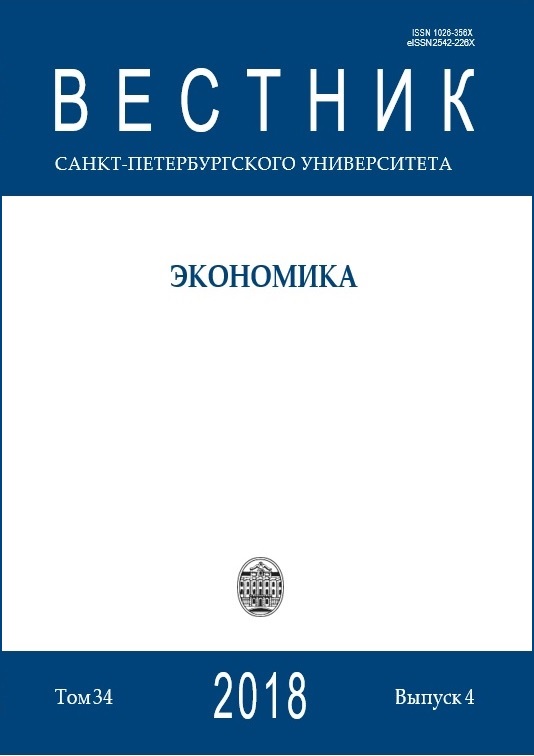Analyzing dynamics and forecasting real effective exchange rates for BRICS countries (1994–2016)
DOI:
https://doi.org/10.21638/spbu05.2018.405Abstract
This article analyses the behavior of real effective exchange rates of BRICS countries and Eurocurrencies (USD & GBP). The obtained data reveals regularities in the behavior of BRICS currencies during the period of 1994–2016 and confirms that rates in the export-focused economy depend on the structure of the international market of real and financial assets. It also demonstrates high currency volatility (on average 50 % in the group) in the zone reaching the level of BIS real effective exchange rate (REER) = 100 (CPI-base 2010). The fundamental analysis shows that in the long-term (1994–2017), BRICS currencies demonstrate stable growth and the fixed rate regime (as Yuan) proved to be the most efficient in the formation of the national segment of global economy. Downward trends in Forex reflect debut difficulties BRICS economies and finances experienced in the process of integration into the global financial and economic environment. High turbulence and volatility of the REER in the range of 60–130 % was the result of the global crisis of 2008–2009 and oil shocks in 2014–2015. The REER below 100 % reflects low corporate and global competitiveness of BRICS economies and weaknesses in public and corporate finance, not the stability of currencies. This research provides a long-term forecast for the strengthening of currencies, as a result of growing efficiency of national economies and the creation of BRICS financial infrastructure (New Development Bank [capital $100 bln] and Pool Contingent Reserve Arrangement [startup capital $100 bln]), as well as an increase in the share of national currencies in mutual payments. The possibility for constructing a short-term forecast, based on the polynomial residues model and statistical modeling, is demonstrated in the case of BRICS currencies. The results of the short-term BIS REER forecast can also be used for forecasting the behavior of currencies, hedging by participants of foreign trade transactions, and currency policy of central banks.
Keywords:
BRICS countries, currencies, real effective exchange rates, BIS REER, fundamental analysis,, volatility, short-term forecasting
Downloads
References
References in Latin Alphabet
Downloads
Published
How to Cite
Issue
Section
License
Articles of the St Petersburg University Journal of Economic Studies are open access distributed under the terms of the License Agreement with Saint Petersburg State University, which permits to the authors unrestricted distribution and self-archiving free of charge.






